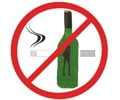Drunken driving? No, no…but how about drugs like methamphetamine or ice, Australian drug addicts seem to ask.
Yes, more than half of amphetamine users there admit to getting behind the wheel within hours of taking the drug, claiming it improves their driving ability, a study has found.The Australian Drug Foundation surveyed almost 7000 people and found that 56 per cent of respondents who had driven after taking the powerful stimulant methamphetamine, or ice, reported no effect on their driving ability, while 27 per cent said their skills on the road had improved after taking the drug.
The study also found that more than 67 per cent of drivers said their driving skills had not changed hours after taking tranquillisers.
”Ice” is a street name for crystal methamphetamine hydrochloride, which is a powerful, synthetic stimulant drug. Stimulant drugs speed up the messages going to and from the brain.
Ice is more potent than other forms of amphetamines. It is more pure than the powder form of methamphetamine ("speed").
The author of the survey and director of the Centre for Youth Drug Studies at the Australian Drug Foundation, Jane Mallick, said yesterday the problem was that most drug users did not feel impaired behind the wheel.
Advertisement
Dr Mallick said the study found that while only 14 per cent of drivers admitted to driving when they had an alcohol level of more than .05, about 52 per cent of respondents said they had driven under the influence of cannabis and 30 per cent had driven after taking benzodiazepines.
Advertisement
Men on pharmaceutical drugs such as benzodiazepines were also more likely to drive than females - with 37.5 per cent admitting doing so, compared with 25.3 per cent of women.
"The research showed that most drivers were well informed about the dangers of drink-driving and the time frame for driving after alcohol consumption, but when it came to drugs, it was very different," Dr Mallick said.
"Overwhelmingly, respondents had little idea about how long to wait between the use of drugs other than alcohol and driving. We know that people don't listen to government messages in regard to drugs so we need credible advice from health organisations."
Source-Medindia
GPL/C







